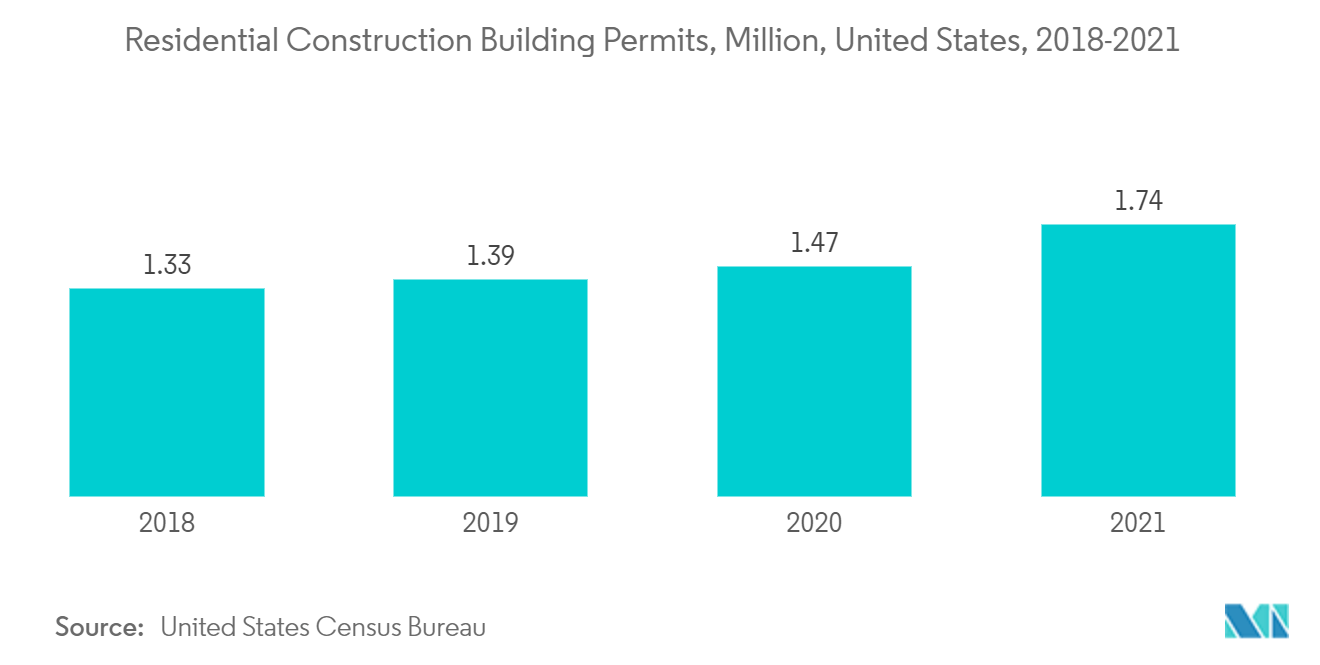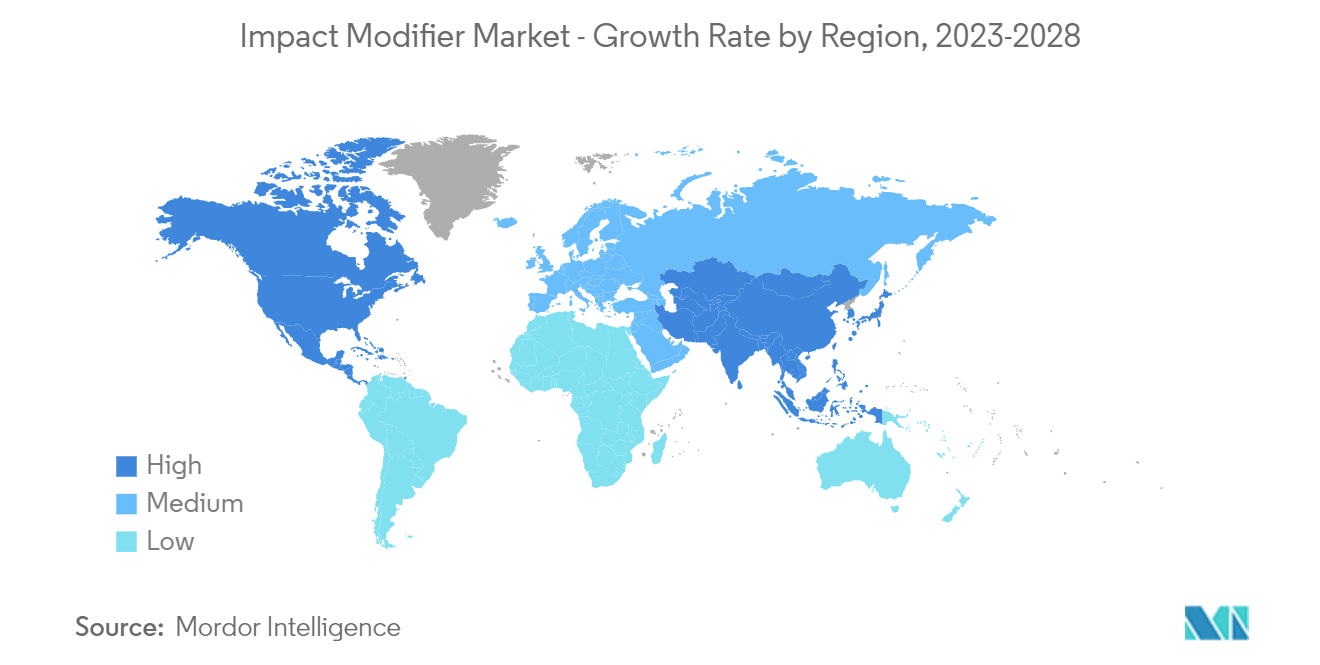Market Trends of Impact Modifier Industry
Increasing Demand from the Construction Industry
- Impact modifiers are building chemicals that improve plastic goods' toughness and longevity, such as pipelines, siding, and roofing materials. They are added to plastic during production to increase its resilience to impact, weathering, and other forms of stress.
- Acrylic impact modifiers and MBS modifiers are used in the construction sector to improve PVC and ABS's toughness, impact resistance, and weather ability.
- Impact modifiers for polyethylene (PE) are used in polyolefin applications to improve the plastic's impact resistance and durability. Impact modifiers for styrenic block copolymers (SBC) are extensively used in the construction industry for roofing and siding applications to improve the plastic's impact resistance and longevity.
- PVC pipelines are extensively used in plumbing and drainage systems, so their demand is strongly correlated with the expansion of the construction industry, particularly in the residential sector. As more homes and structures require plumbing and drainage systems, an increase in residential construction can increase the demand for PVC pipelines.
- Recent years have seen a significant increase in residential construction in the United States, particularly in certain regions. The number of housing units authorized by building permits was 1.74 million in 2021, an increase of 18% from the previous year, according to data from the U.S. Census Bureau.
- Canada's residential and commercial construction industries are experiencing strong demand. Statistics Canada projects that by the end of 2022, 135.36 million permits will have been issued, a 6.2% increase from the previous year.
- The construction industry is expected to dominate the market based on the factors above.

Asia-Pacific Region to Dominate the Market
- The Asia-Pacific region is the largest and fastest-growing market because of the increasing demand for polymer products in various end-user industries in major economies such as China, India, and Japan.
- Plastics manufacture interior and exterior parts of automobiles, such as door panels, instrument panels, consoles, pillars, door panel skin, window seals, and body side cladding. Growing awareness regarding energy efficiency, lightweight, and the popularity of electric vehicles is anticipated to boost the market growth.
- Asia is the largest producer and consumer of plastics in the world. Moreover, the region manufactures approximately 50% of the world's automotive, with established manufacturing facilities in China, Japan, India, South Korea, and Thailand.
- The plastic casing or housing of battery cells used in electric automobiles contains impact modifiers. The battery enclosure is a crucial component that protects the cells from impacts, vibrations, and other mechanical stress that could cause the battery to degrade or perform poorly.
- To increase the battery housing's resistance to impact, manufacturers may add impact modifiers to the plastic material used to construct the housing. These impact modifiers may consist of elastomers, toughening agents, or other additives that increase the plastic's strength and durability.
- According to the China Association of Automobile Manufacturers (CAAM), 47 Chinese power battery manufacturers produced 186,0 GWh in 2021, a year-over-year increase of 182.3%. The production increase was predominantly attributable to China's accelerated expansion of new energy vehicles. (NEVs). In 2021, China will have produced 4.71 million NEVs, with domestic sales exceeding 1.5 million units, a year-over-year increase of over 80%: government policies, subsidies, and consumer demand for NEVsfueled this expansion.
- Impact modifiers are also utilized in the production of mobile phones to increase the device's durability and resistance to impact. In 2022, Chain will be the world's largest producer of mobile devices, accounting for more than 30 percent of global output. China's mobile phone manufacturing capacity is expected to exceed 1.5 billion units by 2022, according to the China Academy of Information and Communications Technology, while domestic mobile phone shipments will reach 354.7 million units in 2021.
- Hence, the Asia-Pacific region is expected to dominate the market based on such market trends.


